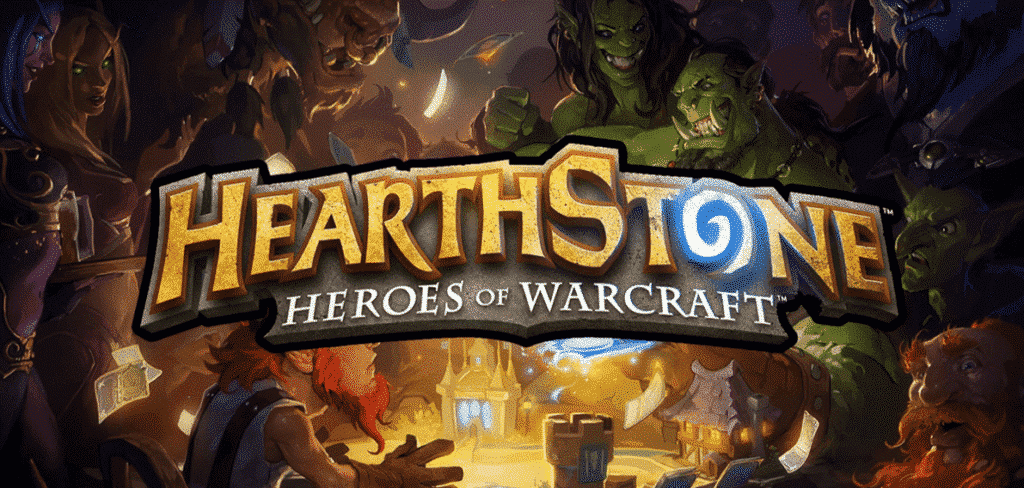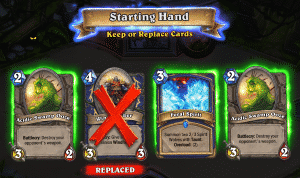- June 24, 2021
- By neon31
- In Articles, Guest Post
- No Comment
- 0
- Tagged: Evergreen
Hearthstone Beginners Guide: In-Game

Hearthstone has consistently been one of the most popular trading card games since its release in March 2014. Countless cards and mechanics have been added to the game in those seven years making it more complex with each expansion. Starting to play Hearthstone can seem like a scary task since there are so many cards, interactions and rules to learn. That’s why I have written this guide: To help you understand the fundamentals of a Hearthstone match and show you how to improve quickly.
The basics
Hearthstone is a turn-based game where two players battle each other. Both players can choose one of ten different classes, with different cards and different play styles. At the beginning of each player’s turn, they will draw one card and gain one mana crystal. You can gain a maximum of 10 mana crystals, meaning that after 9 turns you will reach your maximum mana. Generally, you should try to maximize your mana usage since the more mana you spend the more stats you can get onto the board, although it can be better to save your cards and leave some of your mana unspent. But you shouldn’t save too many cards since you can only hold a maximum of ten cards in your hand. If you draw any more after that point without first playing one of your cards you will “overdraw” the card and it will vanish.

Mulligan
 At the beginning of each game, there is a coin toss deciding which player goes first in the game. The player that goes first only draws 3 cards, while the player that goes second draws four cards and gets a coin. The coin gives you an extra mana to use for a single turn. This makes it fairer since it is generally better to go first because you can pressure your opponent and force him into a more reactive playstyle. Both players get to choose which cards they want to keep and which cards they want to put back into their deck. You should try to keep low mana cost cards and throw away big minions and spells that you can’t use until a few turns later since you need cards to play in the first few turns and you will draw your high mana cost cards after a few rounds anyway.
At the beginning of each game, there is a coin toss deciding which player goes first in the game. The player that goes first only draws 3 cards, while the player that goes second draws four cards and gets a coin. The coin gives you an extra mana to use for a single turn. This makes it fairer since it is generally better to go first because you can pressure your opponent and force him into a more reactive playstyle. Both players get to choose which cards they want to keep and which cards they want to put back into their deck. You should try to keep low mana cost cards and throw away big minions and spells that you can’t use until a few turns later since you need cards to play in the first few turns and you will draw your high mana cost cards after a few rounds anyway.
Planning your strategy
Now that you have drawn your first cards you might be wondering what’s next. That depends on the deck you are playing: If you have a bunch of high-cost cards with powerful effects in your deck you usually want to stall out the game so that you can play your big game changers and win the game from behind. This typically forces you into a more reactive playstyle so just try to stop your opponent from running away with the game until you are ready to hit back. If you have a deck with a lot of low-cost high damage cards you want to play more aggressively. Seek to take control of the board and try to keep it with good trading while also slowly chipping away your opponents hit points until you can finish him off.
The most effective way to win a game with most decks is to get control of the board early and to keep pressuring your opponent. That is why board control and good trading are so important.
Board Control
 In Hearthstone it is vital to have control of the board, meaning that you get more stats on your side of the board than your opponent has on his side of the board. To achieve this you want to play out your minions in a way that is efficient with your mana. If you have three mana it is best to play a three cost minion or a combination of lesser cost minions worth three mana in total. But you have to stay aware of the cards in your hands: If you play too many low-cost minions you will run out of cards very quickly, leaving you with few cards to play in your next turns.
In Hearthstone it is vital to have control of the board, meaning that you get more stats on your side of the board than your opponent has on his side of the board. To achieve this you want to play out your minions in a way that is efficient with your mana. If you have three mana it is best to play a three cost minion or a combination of lesser cost minions worth three mana in total. But you have to stay aware of the cards in your hands: If you play too many low-cost minions you will run out of cards very quickly, leaving you with few cards to play in your next turns.
Trading
Trading means attacking one of your opponent’s minions with one of your own and doing it well is vital for getting board control and winning your games. In a best-case scenario, you can kill an opponent’s minion without your own minion dying. The trade becomes even better if his minion was worth around as much mana as your minion was. Trading a few lower-cost minions into a big minion can also be very positive for you. As a rule of thumb, you want to try to take more mana off your opponent’s side than you take off your side, if you follow that rule you will be fine in most situations.
Trading isn’t a must though, if you have no good options it is absolutely fine to ignore his minions and attack the enemy’s face instead, as long as your hero has enough health left to take a few hits from the enemy minions. This strategy can be especially useful if you think that you can bring the hero down to zero hit points faster than he can kill the minions on your side of the board. Be aware though: If he manages to kill your minions before you can kill him you will probably have a very hard time regaining control of the board.
Also, you generally shouldn’t be too afraid of taking a few points of damage with your hero. A lot of new players are too scared of losing their hit points and while you are obviously not allowed to go all the way down to zero, it is fine to sacrifice a few of your heroes hit points to get an advantage in other areas of the game.
Playing around the enemy
There are always two players in the game, meaning that you can’t just focus on yourself but you also have to pay attention to the enemy and think about potential plays that he might make. A lot of classes have so-called Area of Effect spells that can clear your side of the board easily, like for example mage’s flame strike. You have to keep those spells in mind when playing against specific classes and you have to be careful so as not to overextend and play too many minions into a potential board clear. A good way to learn how to play around
your opponents win conditions while playing towards your own is by always asking yourself: How do I win this game and how do I lose it. In the beginning, this question will be difficult but with more experience it will get a lot easier to answer.
How to improve
If you want to get better quickly you should try to take a few minutes after each game to analyse what went wrong and how to do it better. Your opponent cleared your whole board making you lose the game? Play around that spell next time. The opponent played a minion that you didn’t know? Memorize what it did so you can counter it in your next game. If you just keep playing the game you will slowly but surely learn how to do those things and you will get better each day. Another great way to learn how to play the game better is by watching good players play it, so if that is your thing I can definitely recommend watching a lot of streams and YouTube videos and to try emulating their playstyles.
If you are looking for good decks to play then you can find a ton of them on our site. If you can’t afford them yet don’t worry, in the next guide we will teach you how to best manage your collection, get a bunch of gold and what packs to buy.
This Guide was written by V3rri_, you can find them on Twitter!
Do you want to have your work featured on Hearthstone-Decks.net? Email us at neon31HS@gmail.com, and we’ll talk! Also, feel free to join our Discord, or follow us on Twitter or Facebook. You can also support us on Patreon!
You might also be interested in...
Submit your Top 500 Legend Build, be seen by thousands of people!
Check out the Bazaar "the first free to play Hero-Builder for PC and Mac" Beginner's Guide! https://bazaar-builds.net/the-ultimate-beginners-guide-to-the-bazaar-tips-strategies-and-more/

